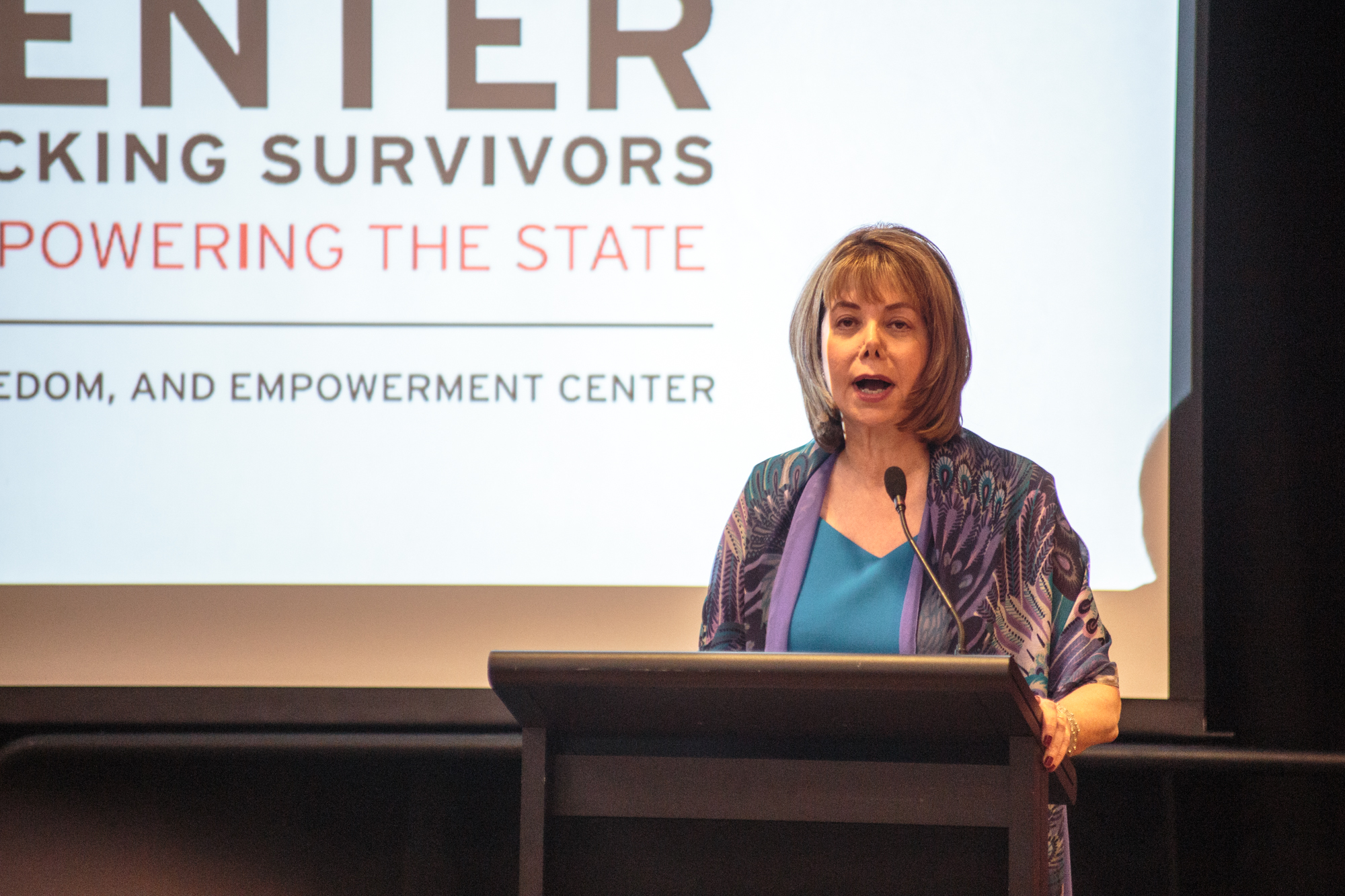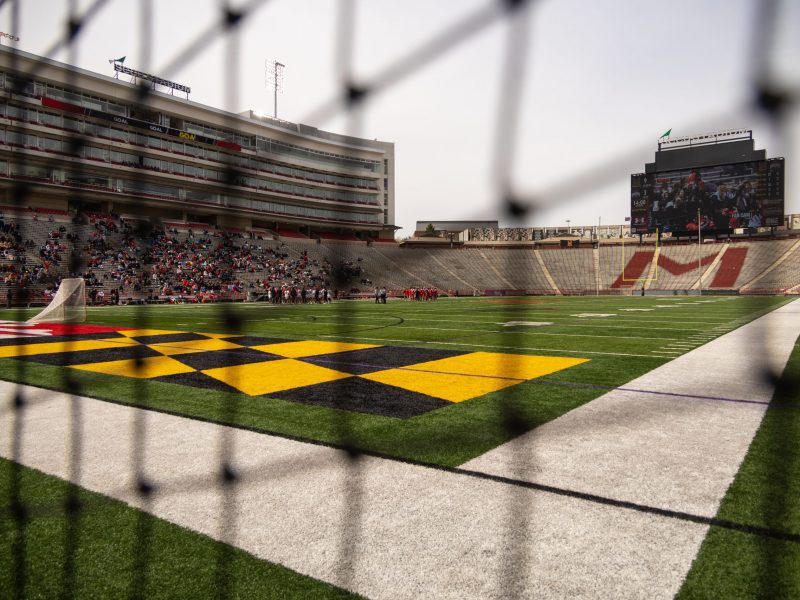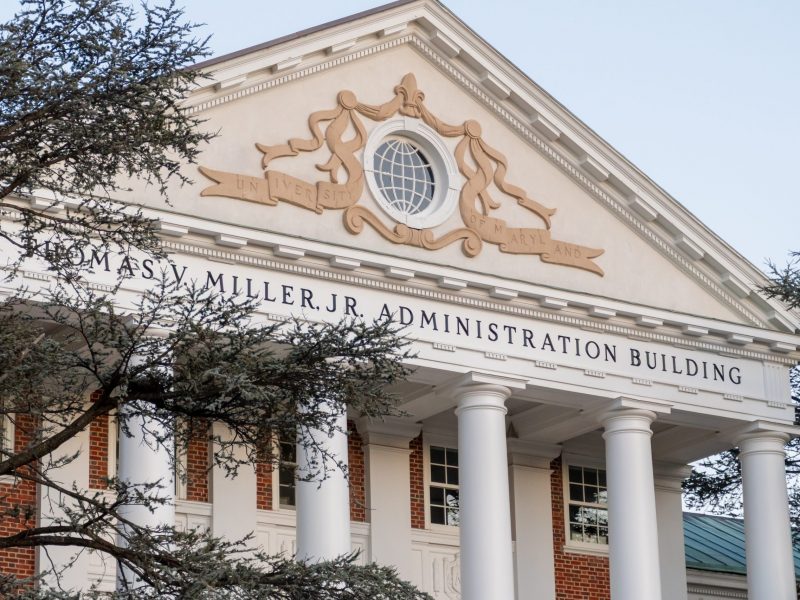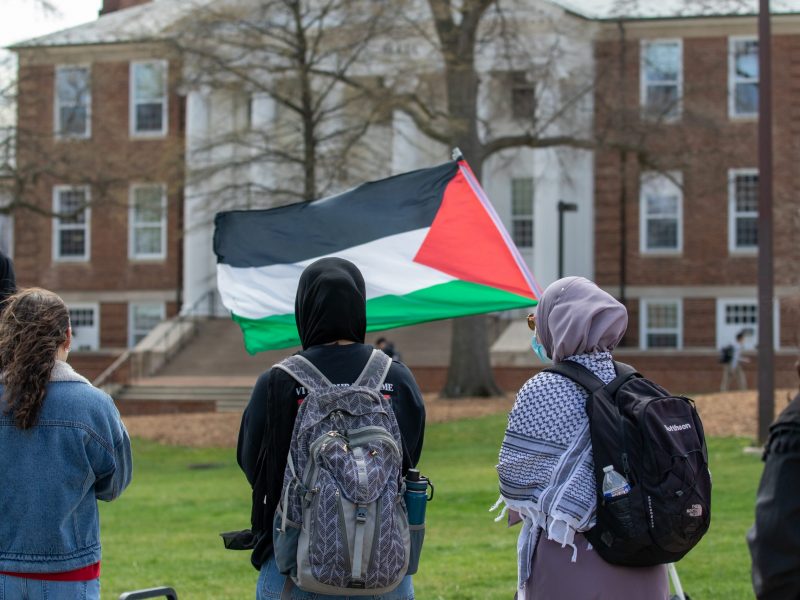As a partner in a law firm office in Washington, Susan Esserman has seen many cases of human trafficking in Prince George’s County.
A number of these cases had a “similar, heartbreaking pattern,” Esserman said, in which survivors of human trafficking struggled with traumatic memories and healing from their experiences.
She wanted to create a program to provide free legal and medical aid, as well as health care, social work and economic empowerment — what she called a “comprehensive, one-stop shop holistic approach” — to those affected by human trafficking, a criminal enterprise that generates more than $150 billion worldwide each year, according to the International Labor Organization.
Local, state and national officials gathered in Stamp Student Union on Monday morning to celebrate the opening of the Support, Advocacy, Freedom and Empowerment Center for Human Trafficking Survivors. The center will be located on Route 1 next to the University of Maryland campus, said Laura Ardito, the center’s deputy director. While there is a small staff due to the recent opening, there are plans to expand, Ardito said.
“We call this human trafficking, but human trafficking isn’t even the right word,” university President Wallace Loh said. “It’s anything but human.”
In 2015, 118 human trafficking cases were reported in Maryland, according to the National Human Trafficking Resource Center. Since 2007, this state has seen more than 2,500 human trafficking cases, with the majority being sex trafficking, followed by labor trafficking.
This university and the University of Maryland, Baltimore launched the SAFE Center through MPowering the State, a joint initiative between the universities supporting innovation, with Esserman serving as the program’s director.
“It’s because of this collaboration … that we’re able to have a meaningful impact,” University of Maryland, Baltimore President Jay Perman said.
Sen. Ben Cardin, State Treasurer Nancy Kopp, Rep. Chris Van Hollen and Prince George’s County State’s Attorney Angela Alsobrooks attended the event, among other officials.
“It amazes me that you can have an occasion that is so inspiring, but so horrifying,” Kopp said. “We lived in innocence for too long. [Esserman] has opened our eyes, and now we have no choice but to do something.”
University Police Chief David Mitchell said this university’s police force will help serve and protect the center — including the clients who use it — and act as a liaison to the Prince George’s County Police Department to share information on issues including human trafficking.
“When you see an issue like this, how can you not take a stand?” Mitchell said. “[The collaboration] is huge, and how wonderful it is that all we’re working together.”
This is the first university-based program of its kind, Esserman said, noting that having the center in this area is important because it’s underserved, in terms of resources, and is in need of more resources for survivors.
Students are collectively invested in the program, Loh said, putting in more than 1,000 collective hours to help set up the SAFE Center. Ardito added that the organization plans to incorporate the undergraduate population and will continue to involve students through internship and volunteer opportunities.
Taking action locally is the first step to countering a global issue, Van Hollen said.
“I can’t think of a more important area to focus your expertise on,” Van Hollen said. “We will not end this globally if we don’t take action locally.”
Cardin said each day, he finds another reason to be proud to represent this state, adding that this center is the start of a worldwide effort to combat human trafficking.
“We’ve got to do a better job — that’s what this is about,” Cardin said. “Count me in. Count us in.”



